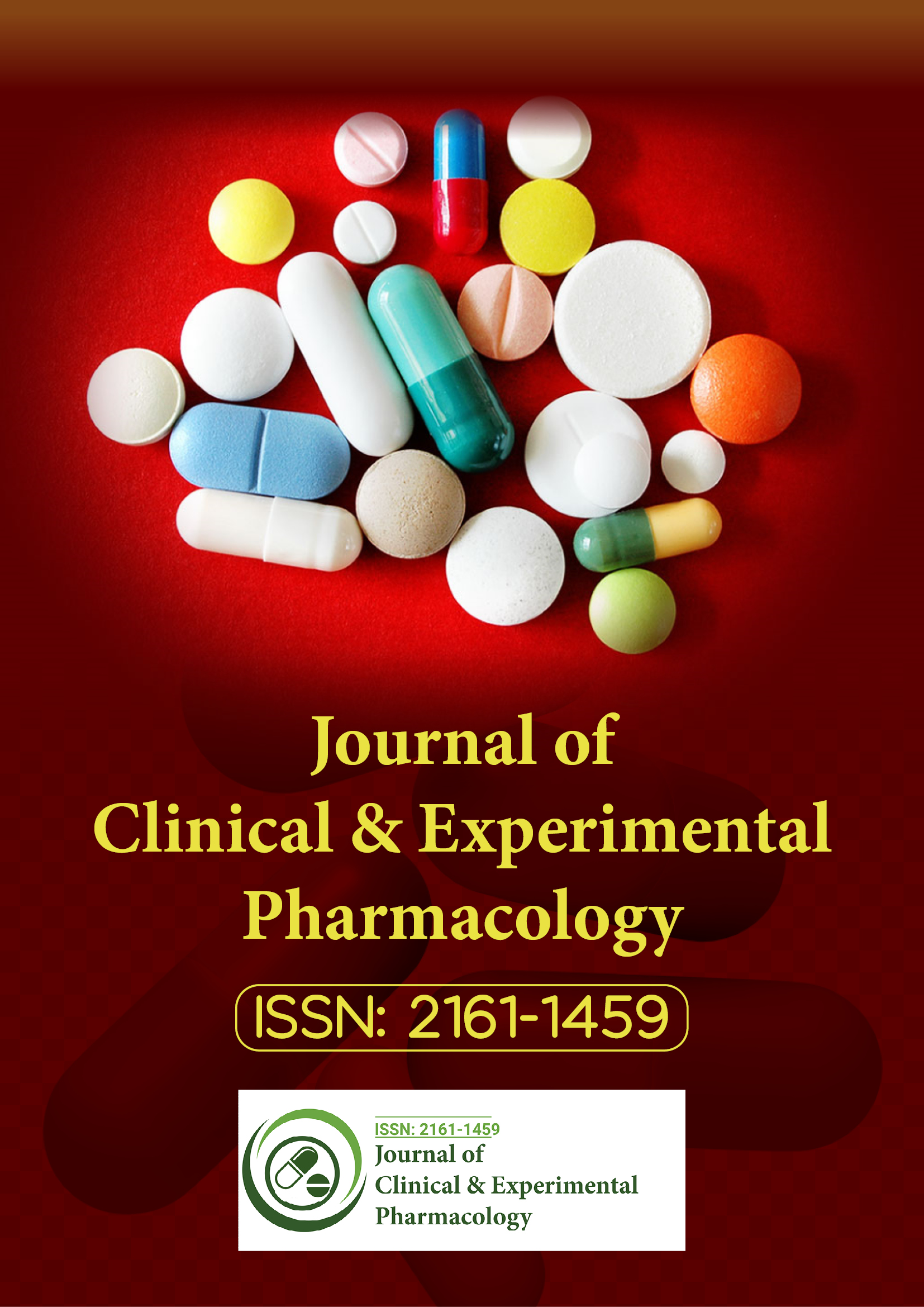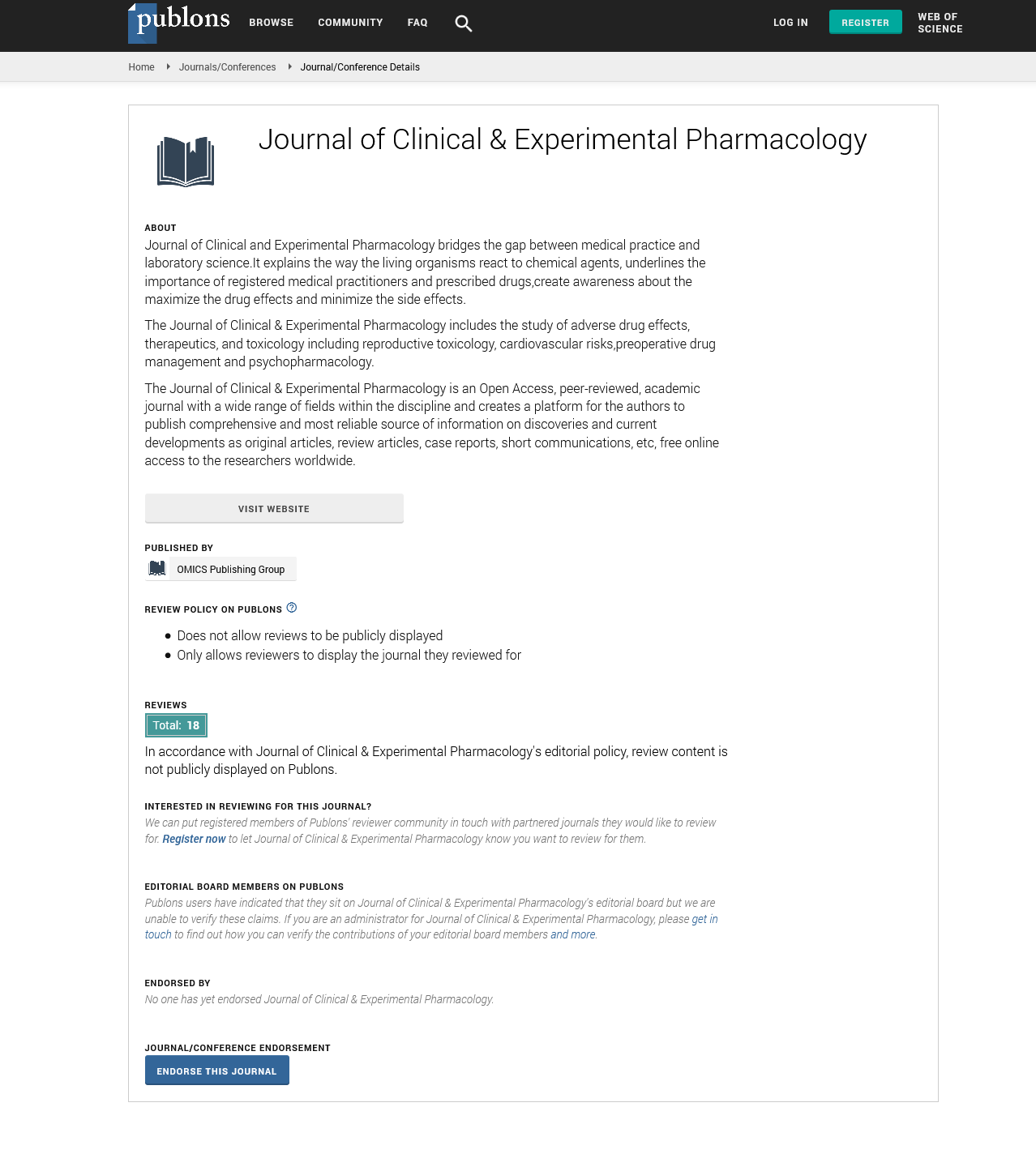Indexed In
- Open J Gate
- Genamics JournalSeek
- China National Knowledge Infrastructure (CNKI)
- Ulrich's Periodicals Directory
- RefSeek
- Hamdard University
- EBSCO A-Z
- OCLC- WorldCat
- Publons
- Google Scholar
Useful Links
Share This Page
Journal Flyer

Open Access Journals
- Agri and Aquaculture
- Biochemistry
- Bioinformatics & Systems Biology
- Business & Management
- Chemistry
- Clinical Sciences
- Engineering
- Food & Nutrition
- General Science
- Genetics & Molecular Biology
- Immunology & Microbiology
- Medical Sciences
- Neuroscience & Psychology
- Nursing & Health Care
- Pharmaceutical Sciences
The central role of 5-HT7 receptors in the mechanism of clinically important analgesic drugs, endogenous pain inhibition and visceral pain modulation
World Congress on Pharmacology
July 20-22, 2015 Brisbane, Australia
Ahmet Dogrul
Scientific Tracks Abstracts: Clin Exp Pharmacol
Abstract:
5-HT7 receptors have been widely distributed in the brain and implicated in the pathogenesis of depression, anxiety, and pain. 5-HT7 receptors are expressed in dorsal horn of the spinal cord, mid brain, pons and medulla compatable with a role in the descending pain inhibitory mechanism. 5-HT7 receptors are also expressed in some part of gastrointestinal tissues. Using selective 5-HT7 receptor antagonist, SB 269970, we found that intrathecal administration of SB 269970, totally blocked systemically administered morphine, tramadol, cannabinoid and paracetamol-induced analgesia in tail flick test in mice. Other researchers reported the involvement of spinal 5-HT7 receptors in amitriptyline and nefopam-induced analgesia. Opioid and nonopioid swim stress induced analgesia (SIA) are commonly used to evaluate pain inhibitory pathways. We observed that intrathecal SB 269970 injection blocked both opioid and non-opioid type SIA. Dorsolateral funiculus lesion or denervation of the spinal serotonergic neurons by 5, 7-DHT resulted in a marked decrease in 5-HT7 receptor expression in the dorsal lumbar spinal cord, accompanied by inhibition of opioid and non-opioid type stress-induced analgesia. We found that systemic and spinally administered 5-HT7 receptor agonists, LP 44 or AS 19 blocked acetic acid-induced writhing test, a visceral inflammatory pain model, reversed by SB 269970 pretreatment. In conclusion, clinically approved analgesic drugs including morphine, tramadol, cannabinoids, paracetamol, and amitriptyline produce antinociception involving, mimicking, at least in part, the 5-HT7 mediated brain circuitry responsible for SIA. Pharmacological targeting of 5-HT7 receptor mediated pain inhibitory mechanisms seems to be a new therapeutic alternative for the treatment of inflammatory visceral pain.
Biography :
Ahmet Dogrul has completed his MD degree at the age of 24 years from Gulhane Academy of Medicine and got pharmacology specialist degree at 30 years at the same institute. He did postdoctoral studies at Arizona University. He is the director of pharmacology department and Pain Research Center of Gulhane Academy of Medicine. He has published more than 35 papers in peer reviewed international journals with 1200 citations.

